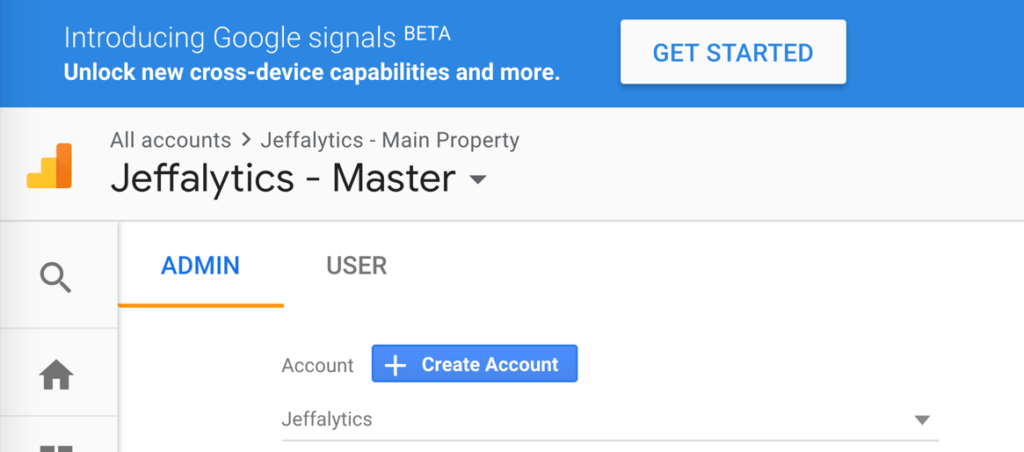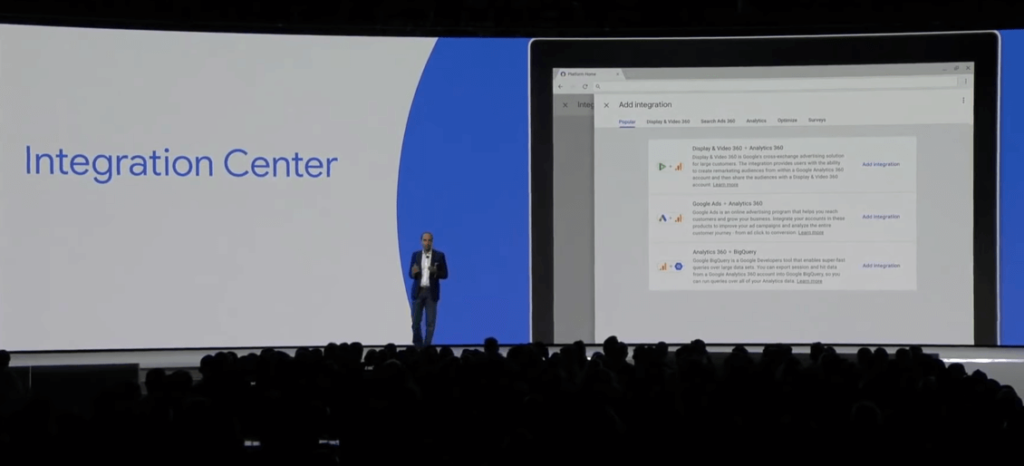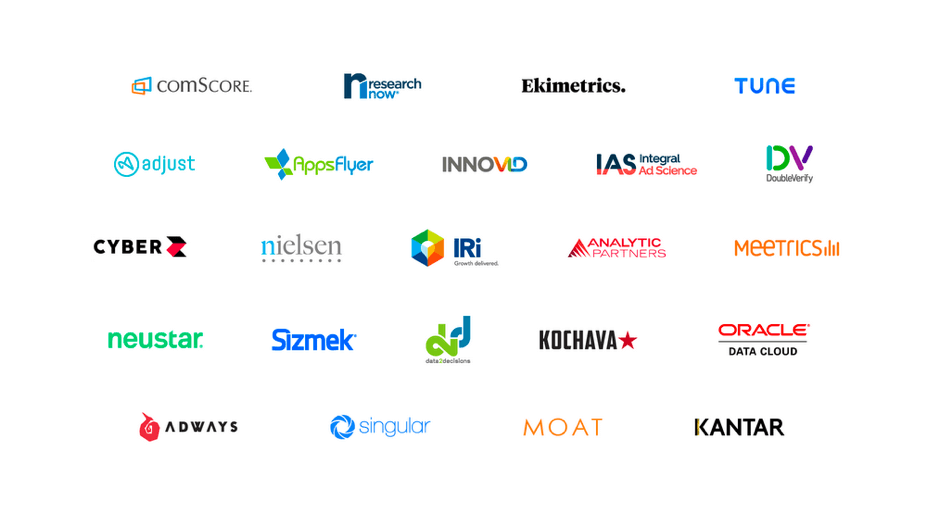Google held their Marketing Live Innovations Keynote presentation for 2018 last week, and Wow! They dropped some bombshell announcements on the marketing world. So what’s up with Google Ads and Google Marketing Platform? That’s what we’ll talk about in this post.
In case (like me), you missed the live stream of this presentation, you might be trying to get caught up on all the big announcements. So, I want to share how you can get yourself up to date on the changes that are coming to our favorite Google marketing platforms. And, I also want to discuss the three product advancements that really caught my attention. One of these new features is so unexpected that it has my mind completely blown.
In this video and post, we’ll take a look at the big changes that are coming our way. We’ll discuss which Google features you can take advantage of immediately, and what to keep your eye on over the next few months.
Let’s dive into the 2018 marketing announcements from Google
Full Disclosure: I missed the 90-minute Live keynote presentation held by Google last week. I had planned to watch it, but I was presenting at a marketing conference in Greece, and then the World Cup was on, and so… Well, I figured I would get caught up this week and give you a summary of all the new changes Google’s rolling out. As it turns out, summarizing all the innovations Google’s launching is not an easy task.
For one thing, Google announced more advancements and new features than I expected. However, many of the innovations they introduced didn’t include enough technical details for me to form an complete review. As these product upgrades launch, we should get more access to information about the technical details. But for now, we’ll just have to trust what Google is telling us.
That’s said, let’s delve into the updates that could have the most significant impact on our marketing.
Google’s rebranding almost everything
There are two major rebrands happening at Google.
Google Adwords now = Google Ads
Rebrands happen all the time, especially when you have a vast array of products like Google does. Renaming AdWords to Google Ads might not seem like a big deal (unless it’s going to torpedo the SEO value of half your blog posts. Thanks Google!) But this name change is more than window dressing.
The rebranding of the AdWords platform includes new features like expanded responsive search ads, and easy-to-use product feeds for shopping ads. There’s a lot of technical details involved in this rebranding that we will be learning about in the coming months.
What do you need to know right now about the rebranding?
Google AdWords is now Google Ads. This rebranding will include a new logo, and some new advertising features we are going to have to evaluate as we get more data. (We’ll take more about some of these features a little later in this post).

Google Analytics 360 and DoubleClick now = Google Marketing platform
The 360 brand is Google’s premium version of their analytics and reporting products. Most of us use the free versions of Google Analytics, Data Studio and Optimize. But many marketing agencies and businesses opt to upgrade to the enhanced features available in the 360 product line.
From now on the 360 products will be found on the Google Marketing platform. Google’s DoubleClick tools will also move to the Google Marketing platform. And as part of the rebranding, Google will drop the DoubleClick name. DoubleClick Bid Manager and Campaign Manager will become Display and Video 360. Double Click Search is now Search 360.

To this date, I haven’t seen any news about whether or not the rebranding will have an impact on our beloved, free Google Analytics platform. But you can be sure that Jeffalytics will be following any developments on this front closely. (I promise you that no matter what happens, I won’t change the name of this site to jeffarketingplatform.com)
Getting caught up on Google’s 2018 innovation announcements
There are a few different ways you can get caught up on all the big news from last week’s Marketing Innovation Keynote presentation.
If you have 90 minutes to spare, you can watch the full recording of the presentation on Google’s Youtube channel.
But, if you’re looking for a condensed, abridged version of the presentation, you can check out the below 10 -minute video put together by Measure School. This video is a great way to get the quick and dirty analysis of the highlights from the presentation.
If you’d prefer to read all about Google’s latest innovations, the Google Ads blog provides a full run-down of the changes to Google AdWords.
You can also find a chronological news feed of all of Google updates to AdWords (now Google Ads) on the Google Ads Announcement Channel.
What are the most exciting Google innovations for 2018?
It’s time to get down to business and discuss the most exciting marketing advancements Google announced.
1) Cross-device reporting in Google Analytics – Google Signals
Cross-device reporting is now built into Google Analytics!

This is BIG NEWS!
Here’s how I understand that Cross-device tracking is going to work in Google Analytics. Google will allow you to track activity from users that are logged into their Google accounts across different devices.
You’ll be able to anonymously track aggregated data about your visitors on any device they use with their Google profile. You’ll get access to data about your visitors’ behavior, their internet activity, and even their YouTube search history!
You can enable cross-device reporting in a new feature called Google Signals. This feature is already available in Google Analytics. So, like a good analytics blogger, I’ve forged ahead and turned on Google Signals in my account.
How to set up Google Signals
The setup process for Google Signals is pretty simple.
If you haven’t set this feature up yet, you should see a Google Signals Beta banner across the top of your Analytics account.

The “Get Started” button on this banner will take you right to the Signals settings. Before you activate Signals, Google will provide you with some more information about what’s included in this new feature.

You can continue through this information to the activation menu. In the activation menu, you can choose where in your Analytics account you want to enable Google Signals.

Think before you activate Google signals
Of course, I wouldn’t take activating cross-device reporting lightly. You need to understand how this kind of tracking impacts your privacy policy, and potentially your user consent policy.
But if you are ready to take the next step, you can click the activate button, and you’ll be up and running with cross-device reporting. It’s that easy to set up!

Once you complete the Signals set-up process, Google will greet you with a user satisfaction survey. They’ll also provide you with a link to their documentation about how the Signals tracking system works.
How will Google Signals be impacted by GDPR?
It’s important to understand that Google Signals is an advanced tracking feature. This type of tracking is collecting information based on your users’ personal data. So if you’re going to use Google Signals, you’ll want to make sure you’re obtaining cookie consent from your users in GDPR affected countries.
You may already have a consent notification in place. But if you’re still looking for guidance or clarification on Cookie Consent, you can check out this video and post we published about Google Analytics tracking and user consent.
I am incredibly excited about Google Signals. Before I wrap up this post, we’re going to discuss why this feature is so significant. And I’ll also offer you an opportunity to take part in my research into the capabilities of Google Signals.
But I don’t want wind myself up into another analytics rant just yet. So let’s talk about the other innovations Google announced that immediately stand out.
2) Smart Campaigns
Smart Campaigns are Google’s machine learning infused solution to making PPC advertising simple.

This feature will allow you to put your advertising on autopilot. Smart Campaigns will take over the work of optimizing your ads using machine learning and Smart Bidding technology. You can even use Smart Campaigns to generate Google optimized landing pages.

Essentially, Smart Campaigns are designed to allow more people to advertise on Google, without doing all the hard work.
This innovation could be a good thing. But only If you trust Google to look out for your best interest.
Remember, Google’s objectives are not always the same as yours
Google’s goal is to make money from advertising. Smart Campaigns reduce the friction for spending money with Google Ads. They remove the barrier of PPC knowledge and skill from advertising.
But, Smart Campaigns don’t change the game. You still need to:
- Know why you’re advertising
- Know how to manage your account
- Know how to set up conversion tracking
- And understand how to calculate the results you need to earn a profit
If you run ads without knowing your objective or how to track results, Google will optimize your campaigns for metrics that may not lead to a positive return on investment. With the wrong KPIs or a lack of conversion tracking, Google will drive clicks to your landing pages, but these click-throughs are not likely to result in enough conversions for you turn a profit.
A public service announcement about Smart Campaigns
Don’t jump into using Smart Campaigns with the assumption Google will just bring you more sales. It’s never that easy. If you use this system without managing it and without a strategy, Google will take your money, and give you nothing but clicks in return.
If you want to automate PPC and be successful, then you need to learn the strategies behind PPC advertising. I have created a comprehensive course on Google advertising – PPC Course. This course will help you understand the strategy you need to know to be successful with PPC. And the knowledge in this course will save you money so fast that it will pay for itself many times over.
Don’t get gamed by Google. Learn PPC strategy so that you know how to hold Google accountable and beat them at their own game.
Let’s get to the other innovations that caught my immediate attention.
3) Integration Center and Google Measurement Partners
The final announcements that caught my interest were Integration center and Measurement Partners.
Integration Center

Integration Center is going to allow you to integrate data between multiple Google products all in one place. The primary purpose of the Integration Center will be to transfer marketing audiences from one system to another.
This tool has the potential to be a huge time saver, but it’s not for everyone. It looks like this tool will only be available on the paid Google Marketing Platform.
Google Measurement Partners

I love it anytime Google creates a way for third-party platforms to access the Google systems. And third-party integration seems to be what the Measurement Partners will offer. I don’t know all the details about this product yet but it looks like Measurement Partners will allow you to connect some of the biggest enterprise reporting platforms to your Google Marketing tools.
If you’re excited to learn more about Integration Center or Measurement Partners, then leave a comment below. If there’s enough interest, I’ll evaluate both these new products, and share my findings with you.
Why Google Signals may be the blockbuster of all the 2018 innovations
As promised, before we close this post out, I’ll share my ranting exuberance about Google Signals. This feature could be one of the biggest innovations in web analytics in recent memory. Anyone who has ever set up cross-device tracking understands the degree of difficulty in implementing this technique.
Now Google’s going to do this for us. Not only that, but Google has more access to cross-device data than anyone else. With Google Signals, you can set up cross-device tracking in just three button clicks. This innovation could drastically increase the accuracy of our reporting.
In the past, I went on the record to say that Google would never give us access to cross-device data from logged-in Google users. Maybe pigs are flying, or you know where has finally frozen over? Or maybe Google opened the data firehose in reaction to GDPR?
I am not yet sure what led to this major development. But cross-device reporting in Google Analytics is available and running in my account as you read this post.
Leave a comment if you want to learn more about Google Signals
So here’s my offer to you; Do you want me to do a full-on deep-dive into Google Signals?
Together, we could be the first ones to take on this challenge. I can dig through my Google Signals data and tell you what I see. We could compare signals to traditional cross-device tracking methods. We can find out if this new feature lives up to the hype. And we can evaluate if it’s worth adjusting your privacy policy, or changing your approach to GDPR to get access to this data.
But first, I need to know if you’re interested in taking this journey together. If you are, then leave a comment on this post. If I get 50 comments, it’s game on! I’ll test this tool out, dig into its functionality and report all my finding back to you. So, If you want to me to do a Deep Dive into Google Signals, let me know in the comments below.
